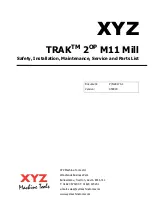
Technical basics
4.12 SNMP
SCALANCE W780/W740 to IEEE 802.11n Web Based Management
70
Configuration Manual, 08/2018, C79000-G8976-C267-13
The management station sends data packets of the following type:
●
GET
Request for a data record from the SNMP agent
●
GETNEXT
Calls up the next data record.
●
GETBULK (available as of SNMPv2c)
Requests multiple data records at one time, for example several rows of a table.
●
SET
Contains parameter assignment data for the relevant device.
The SNMP agent sends data packets of the following type:
●
RESPONSE
The SNMP agent returns the data requested by the manager.
●
TRAP
If a certain event occurs, the SNMP agent itself sends traps.
SNMPv1/v2c/v3 use UDP (User Datagram Protocol) and use the UDP ports 161 and 162.
The data is described in a Management Information Base (MIB).
SNMPv3
Compared with the previous versions SNMPv1 and SNMPv2c, SNMPv3 introduces an
extensive security concept.
SNMPv3 supports:
●
Fully encrypted user authentication
●
Encryption of the entire data traffic
●
Access control of the MIB objects at the user/group level
With the introduction of SNMPv3 you can no longer transfer user configurations to other
devices without taking special action, e.g. by loading a configuration file or replacing the C-
PLUG.
According to the standard, the SNMPv3 protocol uses a unique SNMP engine ID as an
internal identifier for an SNMP agent. This ID must be unique in the network. It is used to
authenticate access data of SNMPv3 users and to encrypt it.
Depending on whether you have enabled or disabled the “SNMPv3 User Migration” function,
the SNMP engine ID is generated differently.
Restriction when using the function
Use the "SNMPv3 User Migration" function only to transfer configured SNMPv3 users to a
substitute device when replacing a device.
Do not use the function to transfer configured SNMPv3 users to multiple devices. If you load
a configuration with created SNMPv3 users on several devices, these devices use the same
SNMP engine ID. If you use these devices in the same network, your configuration
contradicts the SNMP standard.
















































